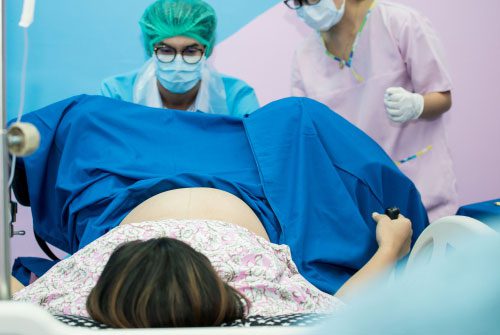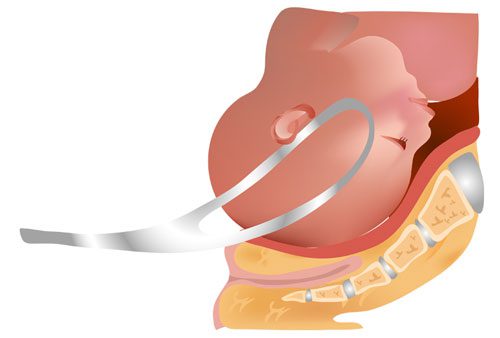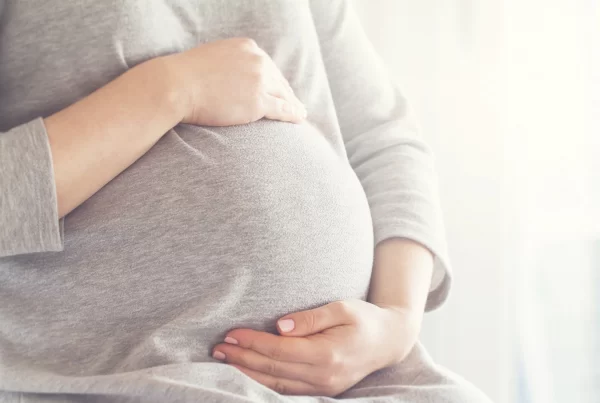As many mothers will remember, the delivery of their child is perhaps one of the most memorable events in their life. While natural birth has always been the popular choice among mothers, many are starting to choose elective caesarean sections. Read on to find out about the pros and cons of each mode of delivery.
What are the Ways You can Deliver Your Baby by?
There are 3 ways a pregnant mother can deliver her baby:
-
Natural or Vaginal Birth

This is the most common way of delivery, where the mother has to go through a labour process. The duration of labour varies among individuals and comprises of 3 stages:
- First stage: Regular painful contractions with progressive cervical dilation till 10cm
- Second stage: Delivery of the baby (effort i.e. “pushing” needed)
- Third stage: Delivery of the placenta
-
Assisted Vaginal Delivery

In this process, your obstetrician will be using either forceps or Ventouse (also known as vacuum delivery) to aid the mother in her delivery of the baby. Assisted vaginal delivery is usually performed when:
- There is a need to deliver the baby quickly, e.g. fetal distress, or maternal conditions such as heart disease
- There is maternal exhaustion from prolonged pushing
In order for your obstetrician to attempt an assisted delivery, there are several criteria that needs to be satisfied:
- The cervix of the mother must be fully dilated
- The baby’s head must be low enough in the birth canal
- The mommy must be able to push
However, it is important to note that assisted delivery does not mean forcefully pulling the baby out!
-
Caesarean Section also known as C-section
This is a surgery done to deliver the baby via the abdomen of the pregnant mother, where a horizontal incision is made at the bikini line. It could be elective/planned or emergency/unplanned. An elective c-section takes place when a mother indicates her decision to do so prior to delivery, or if the obstetrician deems that a c-section is necessary for the mother due to certain risk factors. An unplanned or emergency c-section occurs when natural delivery is tried but failed or if the patient goes into labour earlier than estimated.
During C-section, the pregnant mother will require regional anaesthesia, either through and epidural, spinal or combined spinal-epidural anaesthesia. While general anaesthesia may be used, most of the time, regional anaesthesia is preferred during Caesarean section.
What are the Advantages of Natural Birth over C-section?
Natural Birth |
Caesarean Section |
|
|---|---|---|
Post-delivery pain |
Less |
More |
Recovery time and length of hospital stay |
Shorter |
Longer |
Cost |
Lower |
Higher |
Certainty |
Unpredictable in terms of:
|
Certain as delivery is planned; “horoscopic” delivery possible |
Effects on baby |
Benefits
Disadvantages
|
Benefits
Disadvantages
|
Risk to mothers |
|
|
Potential impact on next pregnancy |
No |
Yes
|
certainty
| Natural Birth | Caesarean Section | ||||||
|---|---|---|---|---|---|---|---|
| Post-delivery pain | Less | More | |||||
| Recovery time and length of hospital stay |
Shorter | Longer | Cost | Lower | Higher |
Unpredictable in terms of:
|
Certain as delivery is planned; “horoscopic” delivery possible |
| Effects on baby |
Benefits
Disadvantages
|
Benefits
Disadvantages
|
|||||
| Risk to mothers |
|
|
|||||
| Potential impact on next pregnancy |
No |
Yes
|
Should You Choose Natural Birth or Caesarean Section?
In uncomplicated cases without medical/obstetric reasons, vaginal delivery is always strongly advised as it is safer and has less impact on the next pregnancy. However, if the pregnant mother prefers C-section, the obstetrician will still respect her wishes. There are certain circumstances though, where vaginal delivery is not advised, when it is associated with greater risks over a Caesarean section. For example, when there are placenta problems, if the baby’s position is not suitable, presence of certain conditions in the mother, fetal distress, if the baby is too big in size, if the mother had previous c-sections.
To all pregnant mummies, discuss with your obstetrician on your preferred mode of delivery and look forward to the birth of your baby!
- Gestational Diabetes – Should Pregnant Mums be Concerned
- A Women’s Wellness – The Importance of Nutrition
- Rare complications of a vaginal delivery process
Dr Watt’s Place of Practice
Gleneagles Medical Centre
6 Napier Road #08-19
Singapore 258499
Tel: +65 6475 1158




